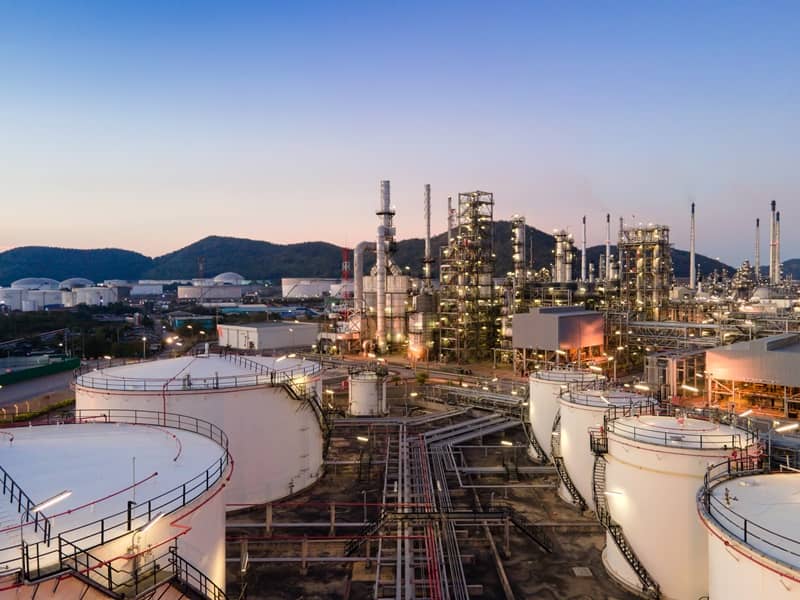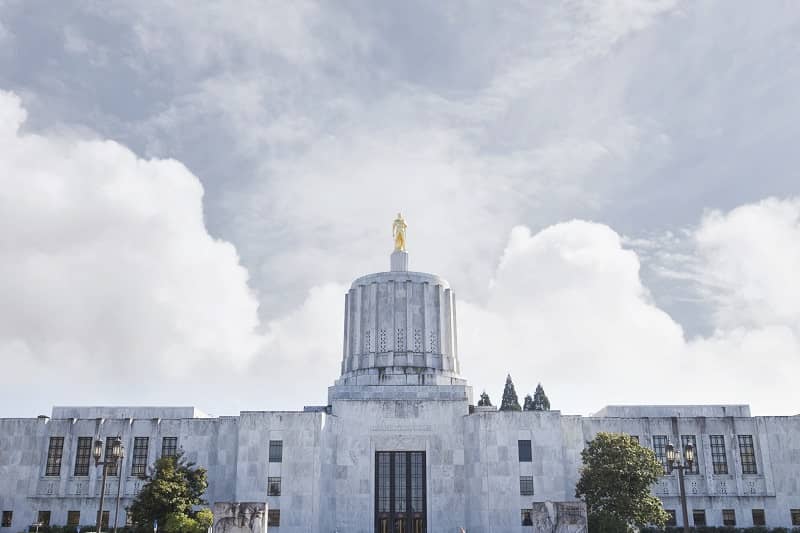Testimony for Senate Bill 80
Senate Environment and Natural Resources Committee
Todd Wynn
February 5, 2009
Senate Bill 80 directs the Environmental Quality Commission to adopt by rule a greenhouse gas cap-and-trade system to achieve greenhouse gas emissions reduction goals. The Oregon version of a cap-and-trade program would be one part of the Western Climate Initiative’s (WCI) regional cap-and-trade program.
There are many problems with implementing a cap-and-trade program in Oregon, but the main issue is that it would create excessive economic burdens and provide little or no environmental benefit. A cap-and-trade program for the state is truly an “all pain, no gain” strategy.
Even if a potential hazard exists from global warming, policymakers need to evaluate whether public policies will be effective in altering global temperatures. If the proposed solutions will not be able to turn down the global thermostat, there should be no reason to charge ahead with these ineffective policies that will do more harm than good.
Economic Costs of Cap-and-Trade
An independent economic study, “Oregon Greenhouse Gas Reduction Policies: The Economic and Fiscal Impact Challenges,”[1] was written and prepared under a contract between Cascade Policy Institute and QuantEcon, Inc. The study assessed the measurable costs in the debate over whether to implement a cap and trade program or any other wide-ranging greenhouse gas reduction strategy and found the costs of enacting such policies to be tremendous.
The study predicts that Oregon’s economic growth to 2020 would be cut approximately in half. Under greenhouse gas reductions the Oregon economy would grow only $58.9 billion, compared to the baseline of $107.2 billion.
Greenhouse gas reductions would result in 90,000 fewer Oregon jobs than would have existed in the absence of reductions and 2020 state and local revenues will be $4.4 billion dollars lower, making it even more difficult to fund social programs and help households adapt to significantly higher fuel and energy prices.
Another independent economic analysis was undertaken assessing the potential costs to the entire WCI region and Oregon if cap-and-trade were to be implemented. “The Economic Analysis of the Western Climate Initiative’s Regional Cap-and-Trade Program”[2] was written and prepared by the Beacon Hill Institute (BHI) at Suffolk University. Although still in its draft form, the authors found that the WCI’s projections of tens of billions of dollars of annual savings are incomplete and biased at best.
Even using the WCI’s own projections for increases in fuel costs, BHI found that implementing cap-and-trade along with the suggested complementary policies will decrease employment, personal income, and disposable income.
Beacon Hill Institute finds that up to 14,806 private sector jobs could be lost in Oregon by 2020. BHI also finds that total personal income would fall by $298.76 to $862.09 million per year in the state.
The authors state, “This consortium of state and provincial governments should understand that, whatever the benefits of those proposals, they will exert measurable, negative effects on their economies.”
“Benefits” of Cap-and-Trade
The known costs of energy rationing might be acceptable if they were offset by demonstrable benefits. Unfortunately, any such benefits are speculative, globally diffuse, and far in the future. A cap-and-trade program on a state or regional level will have no discernable influence on global temperatures, nor will it bring about improved air quality or a better environment to Oregon communities forced to pay higher energy costs.
Recently, a Science and Public Policy Institute study[3] based on a global analysis by well known climate scientist T.M.L Wigley was completed assessing the possible “climate stabilization” effect of a complete cessation of state and nationwide emissions. Complete cessation means that there would be no fossil fuel power plants or even a single internal combustion engine. This is obviously well beyond the scope of Oregon’s cap-and-trade program.
If all of the seven states included in the Western Climate Initiative’s cap-and-trade program completely reduced their emissions to zero immediately and continued this into the future, by 2050 there would be only a 0.014 degree Celsius change in global temperature. By 2100, there would be a mere 0.021 degree Celsius change, not enough to even accurately measure. Moreover, the Oregon contribution to any reduction in global temperature would be only a tiny fraction of that.
In fact, if Oregon completely reduced its emissions to zero now and into the future, the reductions in greenhouse gases would be completely replaced by foreign growth in 16 days, and the growth in China alone would replace any Oregon emissions reductions in 25 days.
Another way to assess the possible environmental benefit of cap-and-trade in Oregon is how much carbon dioxide actually will be reduced in the atmosphere due to this policy. The amount of carbon dioxide in the atmosphere is measured in parts per million (ppm); and, as of 2008, the earth’s atmosphere contains approximately 387 ppm of carbon dioxide. Out of the 387 ppm, 3.2% is considered of human origin. 22% of this is emitted in the United States, and of that Oregon represents 0.7%. The sectors that initially would fall under a cap in Oregon would be industry and electric utilities, which emit 54% of the CO2 emissions of Oregon. This means that completely shutting down industry and electric utilities in Oregon (well beyond the scope of a cap-and-trade program) would reduce global CO2 by an insignificant 1/100th of a ppm, not even a measurable amount.
Because the atmosphere concentration of CO2 has been increasing by about 1 to 2 ppm a year, we would need to completely shut down industry and electric utilities in over 100 Oregons in order to reverse just one year’s global growth of CO2.
Alternative Strategies
Assuming for the moment that reducing GHGs is actually a useful goal, there are a number of specific policies that could be enacted on a “no-regrets” basis. That is, these policies make sense for other reasons, and therefore do not have to be justified on the basis of such a speculative rationale as “preventing climate change.” Some of those policies include:
- Replace broad-based transportation taxes and subsidies with direct user charges, at least on the highly travelled state highway system (where 60% of all VMT takes place, even though the SHWS represents only 13% of all Oregon roads). In the congested Portland region, utilize peak-period highway pricing, also known as congestion pricing. Transportation is the largest source of carbon dioxide in Oregon, yet it is exempt from direct regulation under the WCI cap-and-trade program. This should be remedied under any progressive climate change policy.
- Congestion pricing is a high-leverage strategy because traffic congestion is, by itself, a major source of excess fuel consumption and carbon dioxide emissions. Empirical evidence from California freeways shows that CO2 emissions per mile in free-flow traffic are 60-90% lower than emissions generated in stop-and-go conditions. Since ensuring free-flow travel conditions at all times has tremendous net economic benefits and should be implemented for those reasons, the GHG reduction benefits are simply a “bonus” with no additional costs.
- Provide the electorate with an opportunity to vote on legalizing nuclear power in Oregon again. This probably should be considered the litmus test of the Oregon legislature’s commitment to de-carbonization. It is one of the only emission free sources that can provide reliable and consistent base load power at an affordable rate.
- Address the threat of catastrophic forest fires on public lands in Oregon. Forest fires are a large and growing source of CO2 emissions. Emissions per acre of timberland can be reduced by approximately 67% through proper thinning of overgrown stands. The Oregon legislature should demand more active management on all public forestlands in Oregon, especially those owned by the federal government. Proper thinning and biomass utilization can create market opportunities for electricity generation, thereby supporting several state policy goals.
- Allow the market to continue responding to its natural incentive to minimize costs, including energy. The amount of energy per dollar of GDP has declined steadily for 50 years. In fact, the energy intensity of the Oregon economy (energy consumed per unit of GDP) decreased by 91% between 1963 and 2005.This trend can be accelerated through technological research and deployment. The legislature can help by eliminating corporate income taxes and keeping capital gains taxes low. Investment in better technology is the only real sustainable path to greenhouse gas reductions.
[1] Fruits, E. and Pozdena, R. 2008. Oregon Greenhouse Gas Reduction Policies: The Economic and Fiscal Impact Challenges. QuantEcon, Inc.
[2] Bachman, P., Head, M., Sanchez-Penalver, A., and Tuerck, D. 2009. The Economic Analysis of the Western Climate Initiative’s Regional Cap-and-Trade Program. The Beacon Hill Institute at Suffolk University.
[3] Ferguson, Robert. 2008. Climate Action Plans Fail to Deliver. Science and Public Policy Institute.











